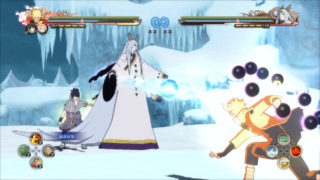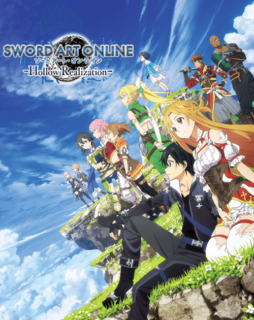Anime has grown from a niche hobby, inspired by a Japanese art style, to a global mainstream phenomenon in the past 20 years. Bandai Namco has been on the forefront of that growing interest from around the world with cross-media brands that include manga, animated television shows, toys and video games. According to the Brand Finance Brand Strength Index, Bandai Namco has one of the most recognizable toy brands in the world, second only to Lego.
There are numerous signs of how anime has matured and become mainstream, ranging from Nickelodeon’s Avatar television series to the immense popularity of the Final Fantasy video games. Anime streaming site, Crunchyroll, reported earlier this year that it surpassed one million paid subscribers, generating over $83 million in revenue, with users streaming more than 1.5 billion minutes of video per month. Its per-user average is about 30 minutes per day. But one of the most prominent examples of anime’s influence is the recently released live-action movie, Ghost in the Shell, starring Scarlett Johansson and based on the manga and 1995 animated movie. Ghost in the Shell brought in $19 million this weekend, while Saban’s Power Rangers (which has anime influences) pulled in $65.1 million in the two weeks since it released.
That kind of popularity is what empowered Bandai Namco Entertainment America (BNEA) to launch its Month of Anime campaign in February—a promotion that included almost every facet of the company’s anime brands. With it, digital platforms such as Steam and the PlayStation Store ran sales on games at the same time brick-and-mortar retailers promoted toys and figures featuring Bandai Namco products. The fact that it came together speaks to the immense interest people have in anime and the Bandai Namco brands in particular. The media giant recently doubled down on anime by buying out controlling interest in the Japanese Anime Consortium, which mainly licenses and streams anime programming in both Asia and the West through the Daisuki platform.

Dennis Lee, director of brand marketing at BNEA, told [a]listdaily that part of the reason anime has become so popular recently is because “there have been a lot of personas that have grown up liking anime, and they’ve become famous or popular in one way or another. They might have their own YouTube channel, blog or became a UFC star or artist. That has helped anime content become much more mainstream that it was 15 or 20 years ago.”
Stephen Akana, brand manager on the anime team at BNEA, agreed by stating, “Look at Avatar: The Last Airbender or RWBY, which are Western-created content inspired by the Japanese anime style.” The two shared their thoughts about the growth of anime and how Bandai Namco, famous for games such as Dragon Ball Xenoverse, Naruto Shippuden: Ultimate Ninja Storm, Sword Art Online and many more, has been taking advantage of this growing wave.
What do you think has contributed to the rise of anime’s global popularity?
[Akana]: The access that people have nowadays when it comes to ways that you can consume anime has become a lot more accessible than it was 15 or 20 years ago. Being able to look at different streaming services such as Crunchyroll, Netflix and Hulu, where a lot of people are consuming different forms of entertainment. It’s been a really easy way for people to give anime a try—if the if it’s something they’re not familiar with it—or to get in there with the binge-watching culture.
Bandai Namco is one of the predominant publishers for anime titles in the West. Rather than there being just one node for people to sit back and watch something, people are able to engage with it. They’re able to play the game and live out the adventures of their favorite hero or get into fringe elements like cosplay, artwork and all those other things that inspire people.
What do you think contributes to anime’s mass appeal?
[Akana]: When you think about it, everyone can pretty much look back on their childhood and remember cartoons that they’ve either engaged with or were very special to them. I think there’s an element of nostalgia that comes to people when they see an animation that has been tailored so that it’s not just for children—animation that’s ageless—and I think that Japanese animation has embraced that. It can show all different elements and all different types of narratives through this creative form.
How do people discover new anime titles?
[Lee]: I think there’s a mix of different ways that fans will search for content that they like. A lot of it comes from social media and finding out what other people are enjoying. They’re also looking back at the different types of brands and shows they’ve liked previously as new content comes out and they’re going out and finding those as well.
[Akana]: Before the rise of social media, the connection that you had to niche hobbies were limited to those within your space. The access that people now have to find like minds on social media has expanded the anime culture through word-of-mouth. Now you’re getting mass recommendations from tastemakers in the anime space.
How has BNEA leveraged the popularity of anime to help promote its games?
[Lee]: That’s a multifaceted question, but I think that one of the elements that starts on our side is linking popular anime brands such as Dragon Ball or Naruto—and the characters that were developed for those series—with great content that utilizes the original stories or creates new stories that branch off that content.
That has definitely helped give fans new ways to interact with their favorite anime series and has—through a typical licensing strategy—elevated the brand overall from being just an experience that you watch to an experience that you get to interact with.
[Akana]: With Dragon Ball Xenoverse, it was taking points of nostalgia, bringing up key moments that worked in the series, and going with a “what if” scenario. Let’s turn what people knew on their heads in a way that can still speak to people who know the content, but doesn’t gate anyone out from it. It’s complementary, and people [who don’t know] may want to learn where it all came from. Maybe the access point for them getting into the anime scene is through gaming.
 How do you let fans know when a new game is releasing when they’re consuming content digitally and there may not necessarily be commercials?
How do you let fans know when a new game is releasing when they’re consuming content digitally and there may not necessarily be commercials?
[Akana]: We use a variety of different ways to do our promotions for our titles. One of the biggest ways is through social media, often through our community team and having them interact with our fans. We’ll also use paid social media placements to reach people on different networks to make sure they are aware of announcements and activities that we have.
[Lee]: We also have multiple channels for communicating with our audience. We recently launched an extension of our corporate Facebook page—Play Anime Games—where we were able to take all of our anime content and collate it through one singular feed so that there is a destination point for people who only want to see the anime arm of what we’re doing. We work on many different products when it comes to games, but we do think that the anime content that we have can reach a wide category. This extra channel has been very helpful.
[Akana]: We’ve also been partnering with the streaming networks. We have a very close relationship with a lot of the partners in the anime industry. Crunchyroll is a company we have close ties to, so we will run a lot of co-promotions with them. Since they have such a loyal and core fan base, we’re partnering to hit anime fans where they’re at.
What contributes more to the popularity of a series such as Sword Art Online? The light novels, the TV show, or the video game series?
[Lee]: I think people become interested in the brands through the original content, which may be the manga or the anime series. With Sword Art Online, people get hooked with the experience by watching the anime and learning about the story, world and characters. Then we, from the video game side, add on to that with an additional experience—new stories and ways to flesh out the characters while adding new characters. The majority of the audience starts with the original content and video games are supplementary to that. But there are instances where the video game expands out to a different audience that the anime series wasn’t reaching on its own.
[Akana]: The first Dragon Ball Xenoverse game released when there wasn’t a lot happening on the anime side. You could almost argue that, with the amount of engagement we had with that game, the general mass audience could name the game before it could name a show. There’s a volley back-and-forth, where the game and anime keep adding to people’s interest and engagement with a brand.
Does the attention movies like Ghost in the Shell get help improve the success of other anime brands?
[Lee]: I think, in a way, it does inadvertently help grow anime overall through exposure to more fans. Similar to how comic book movies have grown the comic book industry, fans of the movies look for other ways to find out more about those characters and franchises. When they go to the comic book stores, they’re exposed to other stories that they could be interested in. The same thing happens with anime.
How did the Month of Anime promotion come together?
[Lee]: Our portfolio has such a varied line-up of anime titles. Many times, it’s not easy to cross-promote these series together, due to different rights holders and artists. But one of the ways we did that was with the Month of Anime promotion that we ran in February. There, we took a look at ways to increase our catalog sales while giving more visibility to our new releases from January and February. We partnered with retail and ran a lot of promotions with our community team while partnering with Funimation, Viz and licensors like Aniplex to put together a cohesive package for our anime titles and merchandise.
Doing that definitely helped give us a significant lift and it generated a lot of interest in anime video games along with the interest in anime overall. It turned out to be very successful for us, the retailers, and the anime industry as a whole.
 [Akana]: I think that speaks to how far the anime genre has come. We able to work with these traditional retailers, not just from an IP standpoint, but from a genre standpoint. If we had thought of that five or six years ago, they probably wouldn’t have agreed to do that. Now, the anime genre has become synonymous with the current generation of 18-30-year-olds (millennials)—they consume the content that these brick-and-mortar stores want to promote.
[Akana]: I think that speaks to how far the anime genre has come. We able to work with these traditional retailers, not just from an IP standpoint, but from a genre standpoint. If we had thought of that five or six years ago, they probably wouldn’t have agreed to do that. Now, the anime genre has become synonymous with the current generation of 18-30-year-olds (millennials)—they consume the content that these brick-and-mortar stores want to promote.
[Lee]: Our partner GameStop had an Anime Day, where they had events in their stores with customers who came in cosplaying. They also had a lot of giveaways, and we gave away Steam codes for full games so that people could try out anime titles. Then there was the sweepstakes that GameStop ran, with a trip to the Anime Expo in Los Angeles as the grand prize. Again, it’s about coming up with fun promotions to help generate interest in anime and partnering with the right consumer-facing retailers to reach a wide audience.


